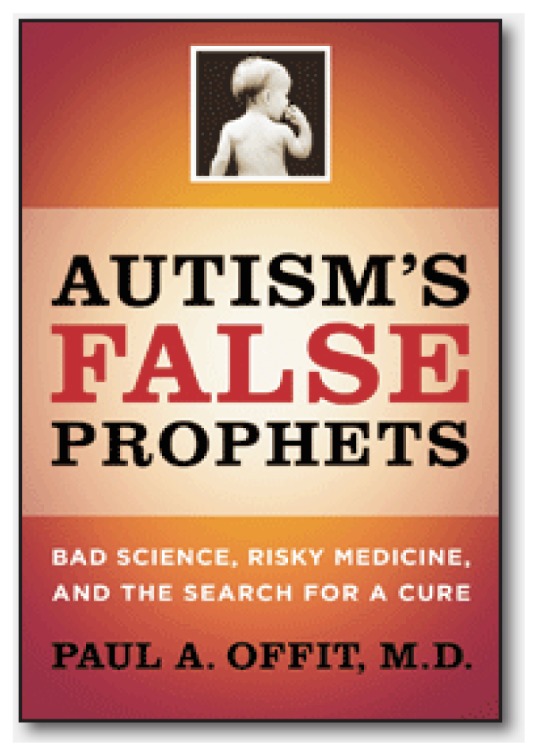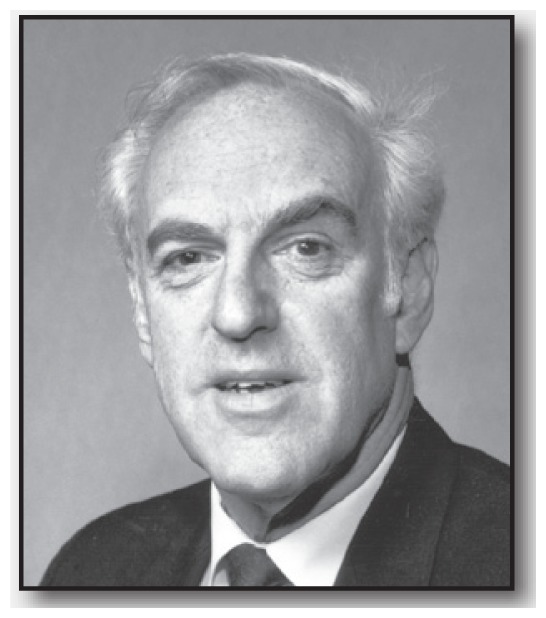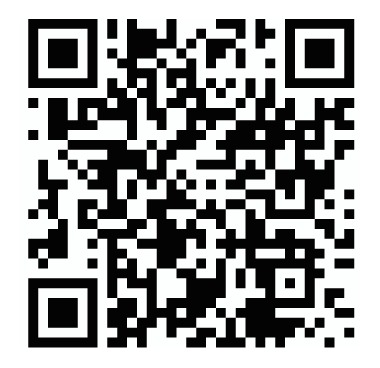
“Autism’s False Prophets: Bad Science, Risky Medicine and the Search for a Cure,” by Paul A. Offit, MD, describes the unsuccessful attempt by fringe scientists, advocacy groups, and personal injury lawyers to link autism with vaccines. It is a morality tale about falsification of research, discredited expert witness testimony, and a media mainly interested in ratings and sensationalism rather than scientific evidence. It reveals a legal system where personal injury lawyers are driven by the lure of huge financial settlements, judges have no background in science or medicine and juries have little understanding of the scientific method. It is a story that has been repeated over and over in the U.S. with other products that have been ultimately been proven safe. It is a story that will undoubtedly be repeated in the future unless changes are made in our legal system.
The author, Paul A. Offit, MD, is Chief of Infectious Diseases at Children’s Hospital in Philadelphia, Professor of Pediatrics at the University of Pennsylvania School of Medicine, and a co-inventor of a rotavirus vaccine. Offit is one of the heroes in the sordid autism story. In the 1990s, after becoming aware of nine deaths from measles in the Philadelphia area, Offit vigorously spoke out against the anti-vaccine hysteria that was then sweeping the country. As a result he received death threats against himself and his family and, for a period of time, had to hire armed security guards for protection.
The story begins in England in 1998. Andrew Wakefield, MD, a gastroenterologist published an article in Lancet, which concluded that the Measles Mumps Rubella vaccine, MMR, caused autism. The press sensationalized the UK and Ireland. Vaccinations decreased, and, as expected, epidemics of measles broke out causing some deaths.
In 2004, six years after Wakefield’s article, a London Times reporter, Brian Deer, made some devastating allegations about Wakefield’s research to the editors of Lancet. Wakefield had been given $100,000 by personal injury lawyer Richard Barr. Five of the eight autistic children in Wakefield’s study were clients of Barr.
At that time the British government had a unique program known as the Legal Services Commission, which provided money to law firms for the investigation of claims. Law firms actually supervised the scientific research. The commission controlled over $1 billion. Reporter Deer found that the commission had provided $30 million to the Barr law firm-$20 million of which went to the law firm and only $10 million to doctors and research scientists. Later investigations revealed that Wakefield received not $100,000 but $800,000 from Barr to support his research. A number of other researchers, both in the U.K. and the U.S. who had supported Wakefield’s findings also received large stipends from Barr’s law firm.
Further independent studies by reputable scientists were unable to verify Wakefield’s findings. These revelations forced an embarrassed Commission to conclude: “The courts are not the place to prove medical truths.” Offit wryly comments: “A science directed by personal injury lawyers is not likely to be the best kind of science.”
The final chapter of the MMR autism scandal was written in 2010, two years after the publication of Offit’s book. Britain’s General Medical Council found Wakefield guilty of “serious professional misconduct,” saying that he had presented his work in an “irresponsible and dishonest” way and that he had shown “callous disregard” for the children his study. The Council struck his name from the UK’s medical register. The Lancet retracted his article.
Wakefield has never shown the slightest remorse for his disgraceful actions. He continues his “research” today in the United States with funding from advocacy groups and personal injury lawyers.
In the U.S. the supposed link between vaccines and autism was based not only on MMR but also on the mercury containing preservative, thimerosal. According to Offit the link was first proposed by two mothers of autistic children and was published in an obscure journal with a miniscule circulation.
Congressman Dan Burton, an opponent of vaccines and the grandparent of an autistic child, chaired a Congressional hearing on the harmful effects of vaccines. A number of national celebrities hopped on the anti vaccine bandwagon, the most influential of whom was Robert Kennedy Jr. Kennedy, an environmentalist, and a professor at Pace University School of Law is an attorney at one of the largest and most successful mass tort firms in the country, which regularly sues drug companies.
The media fanned the flames about the link between vaccines and autism, and, as in England, a wave of mass hysteria against vaccines broke out in the US Writes Office: “It didn’t seem to matter that ten epidemiological studies demonstrated that MMR doesn’t cause autism and that six studies showed that themerosol doesn’t cause autism.”
But scientific evidence didn’t deter the anti-vaccine expert witnesses. They sued some researchers and scientific organizations that were most critical of their work for $1,000,000. They did not attempt to refute the evidence that showed that vaccines did not cause autism. Instead, in a self-serving admission, they claimed that they had “dedicated substantial time and resources to serving as expert witnesses and were dependent upon the compensation they receive as a significant source of income.” After the expenditure of much time and money by the defense, the suit was eventually dropped.
The anti-vaccine advocates were not finished. Even though all of the studies by reputable scientists in peer reviewed journals had established that neither MMR nor thimerosal cause autism, they took their case to Federal Court. Offit scoffs at the notion that judges and juries should be the final arbiters of scientific truth.
He points out that the judges in this case had one thing in common. None had any background in science or medicine. One was a tax lawyer; one was a military lawyer, and one was an environmental lawyer. The plaintiffs hired expert witnesses who also had one thing in common. Over the past decade they had spent the major part of their careers testifying in courtrooms.
The judges evaluated three separate cases representing 5,000 claimants. Their decisions were handed down in 2009 one year after the publication of Offit’s book. Despite Offit’s doubts about their qualifications, all three judges performed admirably in thoroughly evaluating the testimony and sifting the evidence. They found that neither MMR nor thimerosal caused autism. In 2010 the U.S. Federal Court of Appeals upheld the lower court’s ruling.
Some of the scientists who testified in Federal Court described Wakefield’s research as outright fraud. One stated:
“The petitioners have been the victims of bad science conducted to support litigation rather than to advance medical and scientific understanding of autism.”
This blunt statement goes to the heart of the problem. If, as the evidence indicates, Wakefield and the personal injury lawyers who sponsored his research did commit fraud, why should they not be criminally prosecuted? Many innocent children were harmed and some even died as a result of their shameful scheme.
Biography
Arthur H. Gale, MD, MSMA member since 1976, is a Missouri Medicine Contributing Editor. He practices Internal Medicine in St. Louis.
Contact: agalemd@aol.com

Footnotes
Scan code with your mobile device to read more on Vaccinations and Immunizations.



